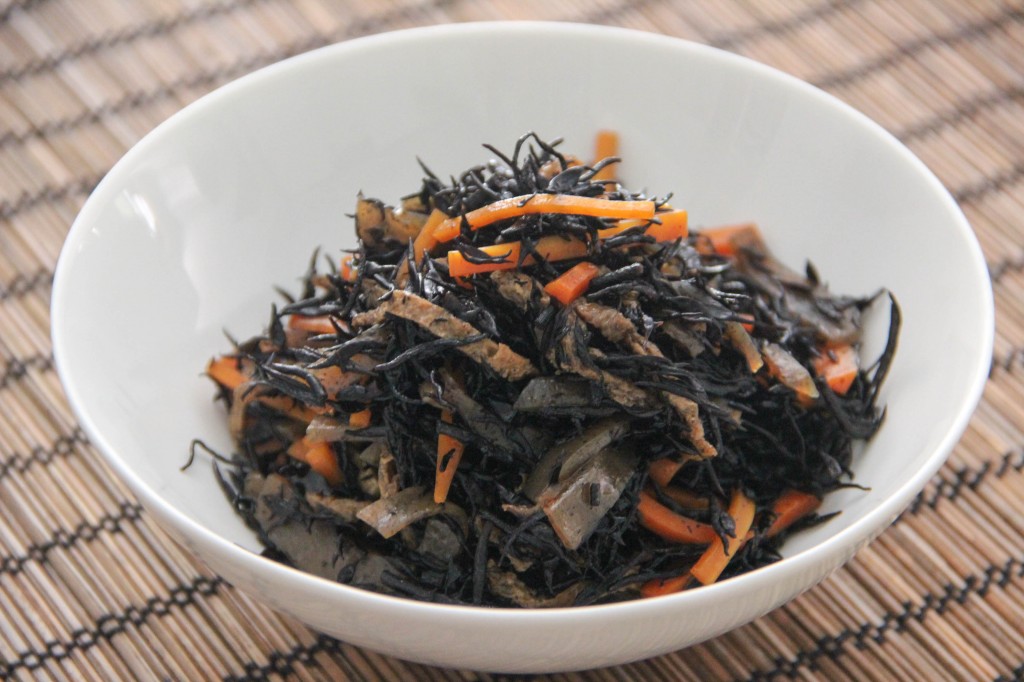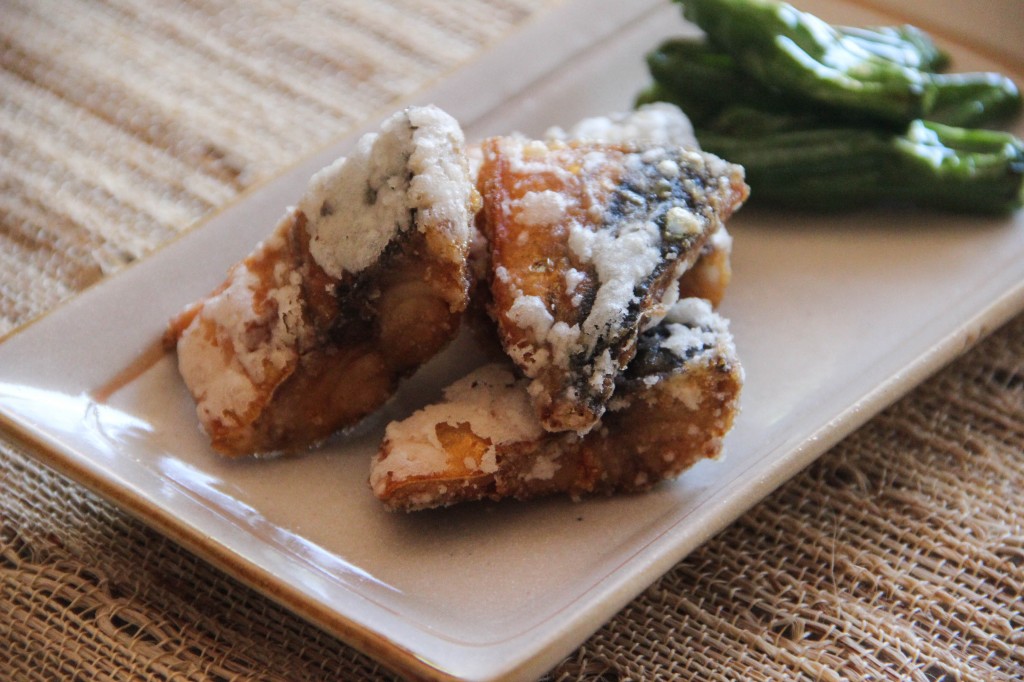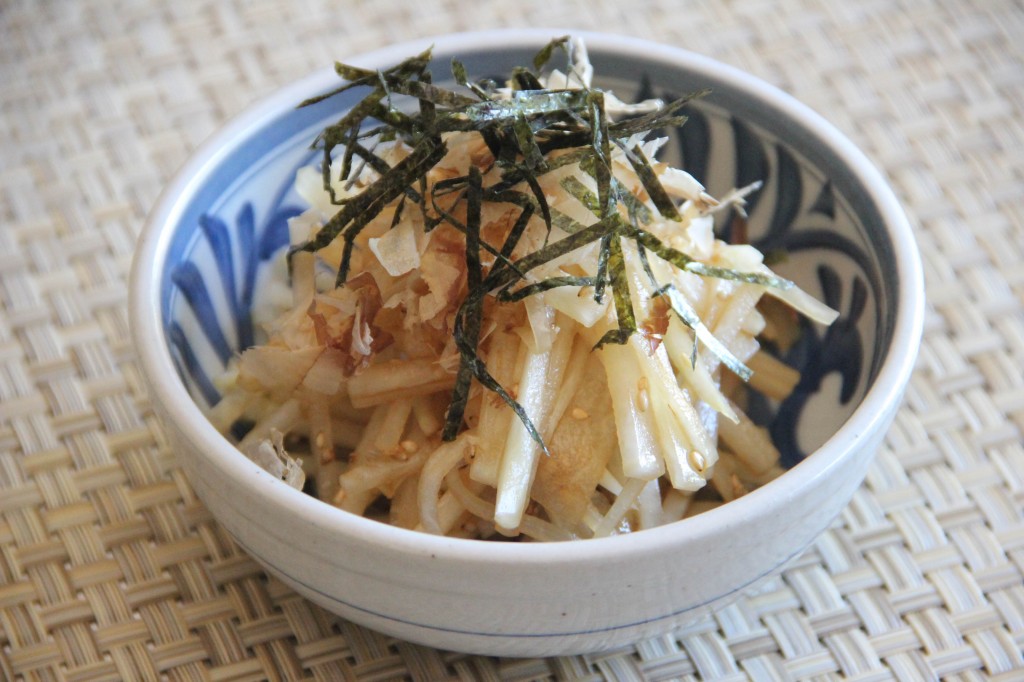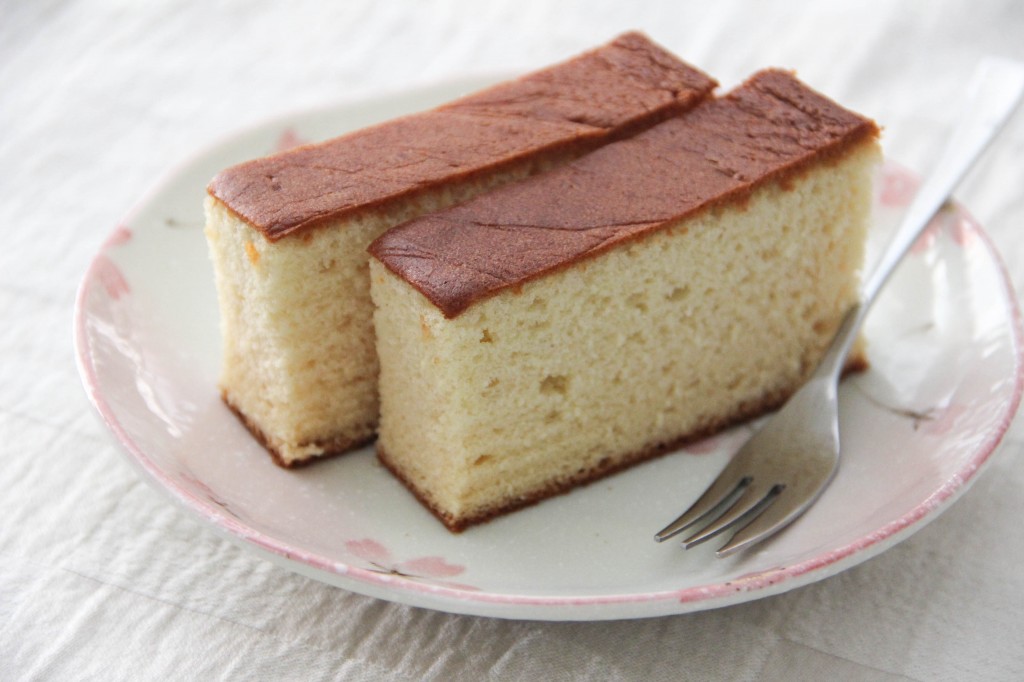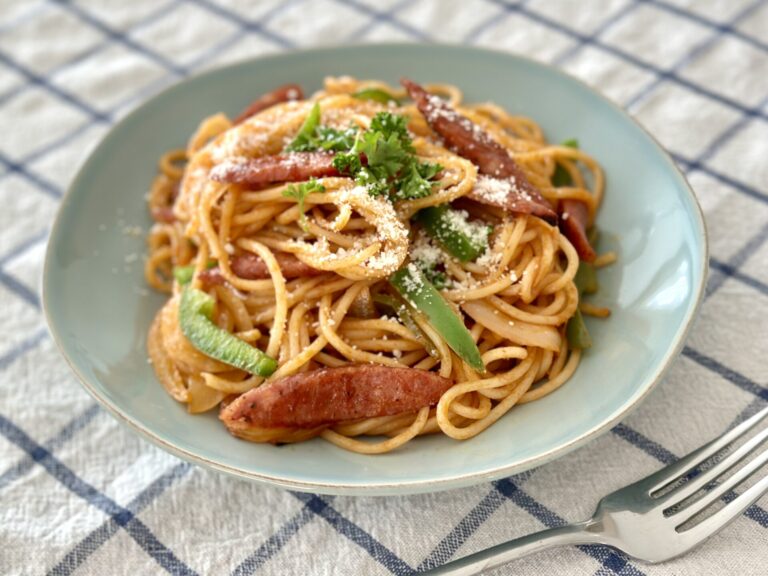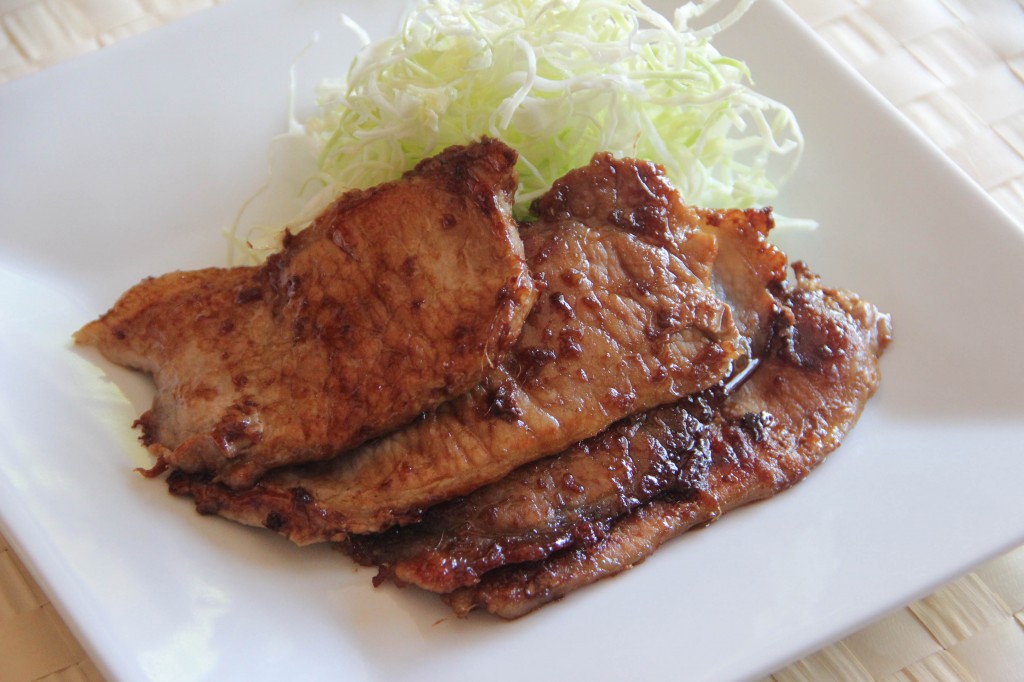Soba (buckwheat) noodles are very popular in Japan and today outside Japan too. There are many varieties of Soba dishes with different toppings and sauces. Soba noodles can be served in hot broth or with a cold dipping sauce. The recipe here is cold Soba with Daikon Oroshi (grated Daikon radish). It is very refreshing and great for Japan’s hot and humid summer.
Hijiki Nimono is another home-cooking Japanese dish for everyday meals. Hijiki has a slender strip or thread-like shape. Typically, dried hijiki is sold in very small clumps, and when soaked in water, it becomes slightly elongated and stretched. It is often seasoned strongly so that it lasts for a few days and is ready to eat at any time. It is often found in bento boxes, and is a great side dish in meals any time of a day. Hijiki Nimono is also one of the healthiest foods among Japanese food.
Tatsutaage is like Karaage, seasoned and deep-fried meat and fish. Here we lightly marinaded Saba (mackerel) with soy sauce and Sake, rolled in Katakuriko (potato starch), and deep-fried. It is an easy and very satisfying dish perfect for dinner.
Yakitomorokoshi is grilled corn brushed with soy sauce. It is loved by Japanese people at fairs and festivals and it is one of the most popular staples of street vendors. The smell of grilled soy sauce is so tasty and appetizing. We find the sweetness from summer corn and the saltiness of soy sauce are the best match.
There are lots of recipes to make salads using Daikon radish in Japan. Daikon is a very common vegetable Japanese people use all year round for everyday meals (although it is in season in winter). This Daikon Salad can be prepared with a very easy and tasty Ponzu based dressing in no time.
Kasutera (Castella) is an old-fashioned Japanese sponge cake that is loved by everyone from the young to the old. It is sweeter and moister than western sponge cakes which are often designed to be eaten with cream or some kind of frosting. You can eat Kasutera as is, and it is perfect for tea time with green tea.
Spaghetti Neapolitan (ナポリタンスパゲティ) is a Western-style Japanese pasta dish. The spaghetti is first boiled, then pan-fried with ham or sausage, onions, and bell peppers, and seasoned with tomato ketchup. While it was influenced by European pasta dishes, it was created in Japan as an original recipe and is not a traditional Japanese dish. Despite its similar name, it is different from the Italian Spaghetti alla Napoletana.
Pork Shogayaki is another popular dish for lunch and dinner in Japan. The flavors of spicy ginger (shoga) and soy sauce with a touch of sweetness from Mirin taste great with steamed rice. It is not as sweet as a typical Teriyaki sauce. This tasty ginger sauce may stimulate your appetite, and you might have to watch out or you’ll be taking a second serving of rice.
Tsukemono are pickled vegetables. There are many kinds that are pickled in many ways, using salt, vinegar, Miso, rice bran, etc. Tsukemono get rich flavors often (but not always) from fermentation in a base like rice bran.
Dinner is the meal everybody is looking forward to the most in the day. It is the biggest and most fulfilling meal of all in many parts of the world. Japanese dinner is the same way. Even if you’re OK to eat a simpler and lighter breakfast of toast and then Udon noodles for lunch, you would like to eat more significant food at night.

